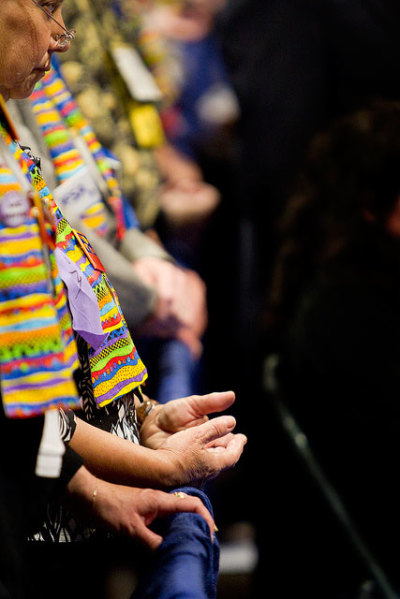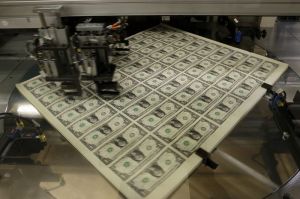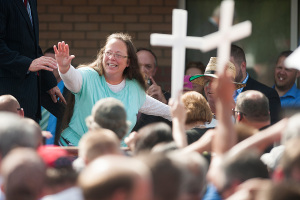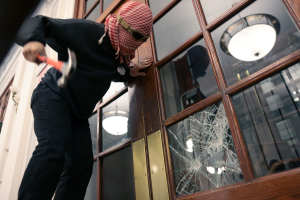Diversity, or not so much in the United Methodist Church

Among the more discouraging experiences of my United Methodist ministry was some years ago when I served on the Jurisdictional Nominating Committee.
We really didn’t nominate. We placed different-sized pegs into different-sized peg holes. Because there were limited slots for conferences on the various boards, conferences to be represented were chosen by lot. Then, because of the quota system (it was a quota system whether we called that or not), our slots were defined by gender, race, age, or clergy-lay specifications. For example, one of our conference nominees needed to be a male, Hispanic layperson. The problem was that while our conference had gone through an elaborate nominating process and many persons were wanting to serve on a general board, none at the time was a male Hispanic layperson. Sitting at the same table with the Nominating Committee were representatives of various ethnic, gender, and age caucuses ensuring that proper diversity and inclusiveness was achieved.
Welcome to the world of diversity, where what looks good is often more valued than what works, and where diversity is defined more in terms of gender, race, and age rather than diversity of experience, distribution of spiritual gifts, and different theological perspectives.
Methodism came late to the diversity scene. Specifically, “diversity” came to United Methodism with the restructuring and the 1972 General Conference. In the 1968-72 quadrennium, the Board of Education, the most powerful board in the Methodist Church at that time, was composed of 39 members, 37 of whom were white, male, and liberal. Only seven were pastors; 13 were associated with universities and seminaries (only if we had such interest from our universities and seminaries today!). Most of the rest were bishops and bureaucrats.
In the period leading up to the restructuring, the effort, whether intentional or unintentional, was to pour persons into a cultural and theological mold that might best be defined as educated, liberal and male. This was the old liberalism, well expressed by hymn 512 of the 1935 hymnal: “These things shall be, a loftier race than e’er the world hath known …”
Education, high principles, and eugenics would help to produce the “loftier race,” with the implication that lesser races and types of persons were disdained. Methodism at the time (the United Brethren and Evangelical traditions were a bit different) did not tolerate diversity, especially theological diversity. Up until 1968, the Discipline mandated that only curriculum materials officially approved were to be used in church schools; only hymn books officially approved were to be used in worship; only audio-visuals officially approved were to be used in church settings; only evangelists officially approved were to be supported by churches; and only missionaries officially approved were to be supported by the local church.
When Roy L. Smith, a leading figure in the church, wrote Why I Am a Methodist (1955), he spoke of “liberality of viewpoint” as a key feature of Methodism. The church had achieved this “liberality of viewpoint,” according to Smith, because Methodists had been educated with the “official” material in the church school and because ministers were being trained with similar courses of instruction in the seminaries.
“Official” educational philosophy at the time questioned church doctrines like Original Sin and the Blood Atonement. Old Testament stories were not appropriate for elementary children, because they would take them literally and would have to be re-educated later; images of Jesus on the cross were not appropriate until junior high (see Ethel Smither, The Use of the Bible with Children, 1937, which made a point that its content was “officially approved”). Evidently, Methodists were produced with “liberality of viewpoint” by being restricted to a one-size-fits-all educational system, in which the one size was theological modernism.
The biblical argument for diversity flows from the idea that the Christian faith transcends gender, age, race, economic status, or culture. The Methodist message was always that “Christ died for all” (unlimited atonement); therefore all can be saved. The gifts of the Spirit are not restricted to race, gender, economic status, or ethnic group.
When Francis Asbury made Harry Hosier, a black man, a key evangelist in early Methodism, it was not to fulfill a diversity goal but rather because Harry Hosier had exceptional gifts. When Phoebe Palmer wrote her monumental Promise of the Spirit in the 1850s, making the case for women speaking in the church, it was not to advance some feminist agenda, but to advance the cause of Christ because Palmer knew that the church would be enriched by the spiritual gifts of women, including speaking in public.
Diversity should never be seen as an end in itself but only as a means to an end. The end in this case should be that the church is built up, that unreached people or cultural groups have the Gospel preached to them, and that in Christ Jesus we are one body.
The old ideological liberalism can be accused of being racist, sexist, classist, elitist and theologically restrictive, and needs to be discarded, but the question is whether the present emphasis on diversity and inclusiveness (as understood by present-day progressives) is not also defective. A serious question to be asked is why compared to the second decade of the 1800s when African-American membership equaled 20% of the total of Methodism (even after the AME split), has the percentage since then steadily decreased until it is only about 5% of the total today. And, this percentage after we have poured energy and money into programs and missional priorities and advocacy groups to encourage African-American presence in the church.
Why is it, if we are so committed to diversity, that United Methodist membership is still basically white, elderly, and upper middle class? And why, if diversity is so highly valued, do our seminaries continue to be so biased against evangelical and charismatic theologies? Why, if we are so committed to diversity, are the staff of our boards and agencies, and particularly the General Board of Church and Society, almost totally devoid of those who favor the Republican Party?
Where are the leaders in the Church who are willing to ask whether “diversity,” as presently practiced, really advances the cause of Christ? Is it time for another restructuring that will redefine diversity and inclusivity and direct the Church on the path to winning the world for Jesus Christ?
Originally published at Juicy Ecumenism.
Riley B. Case is a retired United Methodist clergy member of the Indiana Conference who has for many years authored articles for the Confessing Movement. His articles are published in the Methodist Voices series appearing on Juicy Ecumenism, the blog of the Institute on Religion & Democracy.




























